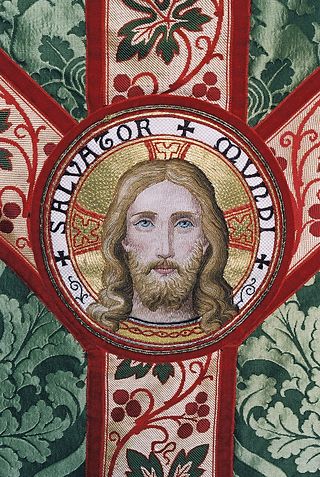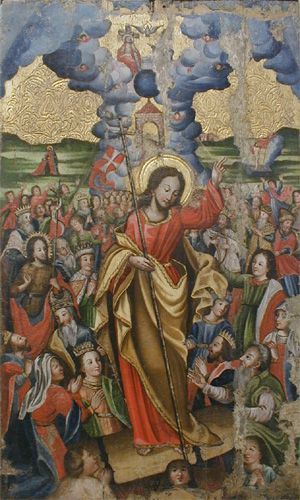Movable Christian observances, 2021
January
First Sunday of the year, unless the Sunday falls on January 1, 6, or 7, then January 2: January 5
First Monday: January 6
Monday after January 6: January 12
Sunday following January 6: January 12
Day after Plough Sunday: January 13
Third Sunday: January 19
February
9th Sunday before Easter in Western Christianity: February 9
2nd Sunday before Ash Wednesday (Western Christianity): February 16
Last Thursday before Lent (Western Christianity): February 20
Saturday before Ash Wednesday: February 22
Sunday before Ash Wednesday (Western Christianity): February 23
Monday before Ash Wednesday: February 24
Tuesday before Ash Wednesday: February 25
46 days before Easter: February 26
Friday after Ash Wednesday: February 28
March
First Sunday of Lent: March 1
March 19, unless the 19th is a Sunday, then March 20: March 19
Fourth Sunday of Lent, 21 days before Easter Sunday: March 22
Fifth Sunday of Lent: March 29
April
Week before Easter:
Second Friday of April: April 10
Easter Week: April 12-18
Sunday after Easter: April 19
May
Third Sunday after Easter: May 3
Monday and Tuesday in the week following the third Sunday of Easter: May 4–5
Fourth Sunday after Easter: May 10
Fourth Friday after Easter: May 15
Third Sunday of May:
Sunday preceding the Rogation days: May 17
Monday, Tuesday, and Wednesday preceding Feast of the Ascension: May 18–20
39 days after Easter: May 21
Seventh Sunday/49 days after Easter: May 31
June
Day after Whitsun: June 1
Day after Whit Monday: June 2
First Thursday after start of Pentecost: June 4
Friday of the week of Whitsun: June 5
First Sunday after Pentecost: June 7
Thursday after Trinity Sunday; 60 days after Easter, or the Sunday immediately following this: June 11
First Thursday after Corpus Christi: June 12
19 days after Pentecost: June 18
Sunday nearest to June 29: June 28
July
Second Sunday in July: July 12
Last Sunday in July: July 26
August
Third Weekend: August 15-16
September
Thursday following the first Sunday: September 6
First Sunday after September 4: September 6
Weekend after first Monday: September 7
Second Sunday: September 13
Third Sunday: September 20
Monday after third Sunday: September 20
October
First Sunday: October 4
Second Sunday: October 11
Last Sunday: October 25
November
Saturday between October 31 – November 6:
Second Sunday before Advent: November 8
Second Wednesday before the First Sunday in Advent: November 11
Sunday nearest November 11: November 14
Last Sunday before First Advent Sunday: November 22
Fourth Sunday before Christmas Day: November 29
December
First Friday: December 4
First Sunday: December 6
Seven days, starting on First Monday: December 7-13
Sunday two weeks before Christmas: December 13
Second-final Sunday before Christmas Day: December 13
Thursday of the last full week before Christmas: December 17
Last Friday before Christmas: December 18
Last Saturday before Christmas: December 19
Sunday before Christmas: December 20
Winter Solstice: December 21
The Sunday between Christmas Day and New Year's Day (both exclusive), or December 30 if both Christmas Day and the Solemnity of Mary, Mother of God are Sundays: December 27

The liturgical year, also called the church year, Christian year, ecclesiastical calendar, or kalendar, consists of the cycle of liturgical days and seasons that determines when feast days, including celebrations of saints, are to be observed, and which portions of scripture are to be read.

Holy Week is the most sacred week in the liturgical year in Christianity. For all Christian traditions, it is a moveable observance. In Eastern Christianity, which also calls it Great Week, it is the week following Great Lent and Lazarus Saturday, starting on the evening of Palm Sunday and concluding on the evening of Great Saturday. In Western Christianity, Holy Week is the sixth and last week of Lent, beginning with Palm Sunday and concluding on Holy Saturday.

Ordinary Time is the part of the liturgical year in the liturgy of the Roman Rite, which falls outside the two great seasons of Christmastide and Eastertide, or their respective preparatory seasons of Advent and Lent. Ordinary Time thus includes the days between Christmastide and Lent, and between Eastertide and Advent. The liturgical color assigned to Ordinary Time is green. The last Sunday of Ordinary Time is the Solemnity of Christ the King.

Septuagesima is the ninth Sunday before Easter, the third before Ash Wednesday. The term is sometimes applied to the seventy days starting on Septuagesima Sunday and ending on the Saturday after Easter. Alternatively, the term is sometimes applied also to the period sometimes called pre-Lent that begins on this day and ends on Shrove Tuesday, the day before Ash Wednesday, when Lent begins.

Ember days are quarterly periods of prayer and fasting in the liturgical calendar of Western Christian churches. The term is from Old English: ymbren, possibly derived from Latin: quatuor tempora. These fasts traditionally take place on the Wednesday, Friday, and Saturday of the weeks following St Lucy's Day, the first Sunday in Lent, Pentecost (Whitsun), and Holy Cross Day, though some areas follow a different pattern. Ordination ceremonies are often held on Ember Saturdays or the following Sunday.

The Paschal Triduum or Easter Triduum, Holy Triduum, or the Three Days, is the period of three days that begins with the liturgy on the evening of Maundy Thursday, reaches its high point in the Easter Vigil, and closes with evening prayer on Easter Sunday. It is a moveable observance recalling the Passion, Crucifixion, Death, burial, and Resurrection of Jesus, as portrayed in the canonical Gospels.
In the liturgy of the Catholic Church, a feria is a day of the week other than Sunday.

Eastertide or Paschaltide is a festal season in the liturgical year of Christianity that focuses on celebrating the Resurrection of Jesus Christ. Preceded by Lent, it begins on Easter Sunday, which initiates Easter Week in Western Christianity, and Bright Week in Eastern Christianity.
The Paschal cycle, in Eastern Orthodox Christianity, is the cycle of the moveable feasts built around Pascha (Easter). The cycle consists of approximately ten weeks before and seven weeks after Pascha. The ten weeks before Pascha are known as the period of the Triodion, referring to the liturgical book that contains the services for this liturgical season. This period includes the three weeks preceding Great Lent, the "pre-Lenten period", the forty days of Lent, and Holy Week. The 50 days following Pascha are called the Pentecostarion, also named after the liturgical book.

The Epiphany season, also known as Epiphanytide or the time of Sundays after Epiphany, is a liturgical period, celebrated by many Christian Churches, which immediately follows the Christmas season. It begins on Epiphany Day, and ends at various points as defined by those denominations. The typical liturgical color for the day of Epiphany is white, and the typical color for Epiphany season is green.
This article lists the feast days of the General Roman Calendar as they were at the end of 1954. It is essentially the same calendar established by Pope Pius X (1903–1914) following his liturgical reforms, but it also incorporates changes that were made by Pope Pius XI (1922–1939), such as the institution of the Feast of Christ the King, and the changes made by Pope Pius XII (1939–1958) prior to 1955, chief among them the imposition of the Feast of the Immaculate Heart of Mary upon the universal Church in 1944, the inscription of Pius X into the General Calendar following his 1954 canonization, and the institution of the Feast of the Queenship of Mary in October 1954.

The Copts, who belong to the Coptic Orthodox Church, observe fasting periods according to the Coptic calendar. In Coptic Orthodox Christianity, fasting is defined as going without water and food from midnight to sunset; after that time, the consumption of water and one vegetarian meal is permitted. The fasting periods of Coptic Christians are exceeded by no other Christian denomination except the Orthodox Tewahedo. Out of the 365 days of the year, Copts often fast between 210 and 240 days. This means that Copts abstain from all animal products for up to two-thirds of each year. Coptic Orthodox fasts have evolved over time to become more lengthy and severe. A lifestyle involving such fasts may have contributed to the pacifist mindset of the Coptic people for centuries. Married couples refrain from sexual relations during Lent "to give themselves time for fasting and prayer".
Principal Feasts are a type of observance in some churches of the Anglican Communion, including the Church of England, the Episcopal Church, and the Anglican Church of Canada. All Principal Feasts are also Principal Holy Days, sharing equal status with those Principal Holy Days which are not Principal Feasts. They are considered to be the most significant type of observance, the others being Festivals, Lesser Festivals, and Commemorations. As with all Principal Holy Days, their observance is obligatory. The Anglican Principal Feasts and Principal Holy Days are somewhat comparable to Roman Catholic Solemnities and Holy days of obligation.

The Ambrosian Rite is a Latin Catholic liturgical Western Rite used in the area of Milan. The Traditional Ambrosian Rite is the form of this rite as it was used before the changes that followed the Second Vatican Council.
The ranking of liturgical days in the Roman Rite is a regulation for the liturgy of the Roman Catholic church. It determines for each liturgical day which observance has priority when liturgical dates and times coincide, which texts are used for the celebration of the Holy Mass and the Liturgy of the hours and which liturgical color is assigned to the day or celebration.

Lent is the solemn Christian religious observance in the liturgical year commemorating the 40 days Jesus spent fasting in the desert and enduring temptation by Satan, according to the Gospels of Matthew, Mark and Luke, before beginning his public ministry. Lent is usually observed in the Catholic, Lutheran, Moravian, Anglican, United Protestant and Orthodox Christian traditions, among others. Some Anabaptist, Baptist, Methodist, Reformed, and nondenominational Christian churches also observe Lent, although many churches in these traditions do not.
The Easter cycle is the sequence of the seasons and days in the Christian liturgical year which are pegged to the date of Easter, either before or after it. In any given calendar year, the timing of events within the Easter cycle is dependent on the calculation of the date of Easter itself.

Fasting and abstinence have historically constituted a major element of the practice of the Ethiopian Orthodox Tewahedo Church, following the counsel of Saint Paul to "chastise the body and bring it under subjection" per 1 Corinthians 9:27. It is generally agreed, and asserted by the Church itself, that the fasting regime of the Ethiopian Church is the strictest of any Church, with 180 mandatory fasting days for laypeople and up to 252 days for clergy and the particularly observant. The general list of fasts are laid out in the Fetha Negest.
In the Calendar of the Church in Wales, each holy and saint's day listed has been assigned a number which indicates its category. Commemorations not included in this Calendar may be observed with the approval of the bishop.











